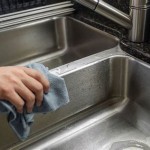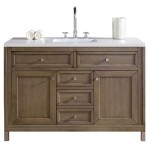Sink Sprayer Leaking From Handle: Troubleshooting and Repair
A leaking sink sprayer can be a frustrating annoyance, creating a constant drip that wastes water and can damage surrounding surfaces. While a variety of factors can cause a sprayer to leak from the handle, pinpointing the problem and implementing the correct solution can often be a simple and straightforward process. This article will guide you through the common causes of a leaking sprayer handle and provide clear, step-by-step instructions for resolving the issue.
1. Worn-Out O-Rings or Seals
One of the most frequent culprits behind a leaking sprayer handle is worn-out or damaged O-rings and seals. These small rubber components are responsible for creating a tight seal around the handle, preventing water from escaping. Over time, they can become brittle, cracked, or compressed from use, compromising their ability to effectively seal the sprayer. This leakage often manifests as a slow drip from the handle when the sprayer is turned off.
2. Loose or Damaged Handle Assembly
Another potential cause for a leaking sprayer handle is a loose or damaged handle assembly. The handle itself is typically attached to a stem or valve inside the sprayer, which in turn controls the water flow. If the handle becomes loose or the stem is damaged, the mechanism may not effectively shut off the water supply, resulting in a leak. This type of leak might appear as a continuous flow of water even when the handle is in the off position.
3. Clogged Sprayer Head
While not directly related to the handle, a clogged sprayer head can indirectly contribute to leaking from the handle. When the spray head is obstructed by debris or mineral deposits, it can cause a buildup of water pressure within the sprayer system. This increased pressure can force water through the handle seal, resulting in leaks. A clogged sprayer head might also cause a weak or inconsistent spray pattern.
Troubleshooting and Repair
Before embarking on repairs, it's essential to turn off the water supply to the sink. This can typically be achieved by shutting off the valve beneath the sink. Once the water is turned off, you can begin assessing the problem and implementing the appropriate solution.
Replacing O-Rings and Seals:
1.
Remove the sprayer handle:
The process for removing the handle will vary depending on the specific design of your sprayer. Most handles can be unscrewed by hand, but some may require a wrench or pliers. 2.Inspect the O-rings and seals:
Once the handle is removed, carefully inspect the O-rings and seals for signs of wear, cracks, or compression. 3.Replace worn components:
If any of the O-rings or seals are damaged, replace them with new ones of the same size and material. These components are readily available at most hardware stores or online retailers. 4.Reassemble the handle:
Once the new O-rings and seals are installed, reassemble the handle and turn the water back on. Test the sprayer to ensure the leak has been resolved.Addressing Loose or Damaged Handle Assembly:
1.
Tighten the handle:
If the handle is simply loose, it may be possible to tighten it by hand. However, if the handle screws are stripped or the handle is excessively loose, it might need to be replaced entirely. 2.Repair or replace the stem:
If the stem is damaged, it might require repair or replacement. If the stem is beyond repair, a new one can be purchased and installed. However, this process can be more involved and may require some plumbing experience. 3.Replace the handle assembly:
In some cases, the entire handle assembly may need to be replaced. This option is generally recommended if the handle is old or heavily damaged. Replacement handle assemblies are readily available, and the installation process is typically straightforward.Cleaning the Sprayer Head:
1.
Remove the sprayer head:
Most sprayer heads can be removed by unscrewing them from the sprayer hose. 2.Soak and clean the head:
Soak the sprayer head in a solution of white vinegar or a commercial descaler. Let it soak for several hours or overnight to loosen any mineral deposits or debris. 3.Clean the head:
After soaking, use a small brush or toothbrush to scrub away any remaining debris. 4.Rinse and reassemble:
Rinse the sprayer head thoroughly and reassemble it onto the sprayer hose. Turn on the water to test the spray pattern and ensure the head is functioning properly.By carefully troubleshooting and applying the appropriate repair methods, you can effectively address a leaking sink sprayer handle and restore the functionality of your kitchen faucet. Remember to always turn off the water supply before working on any plumbing components, and exercise caution while handling tools and parts to avoid injury.

How To Fix A Sink Sprayer Leaking In The Kitchen Full Guide

Kitchen Sink Sprayer Leaking At Handle

How To Fix The Spray Hose On Your Kitchen Sink Angi

Ask A Plumber Sink Sprayer Repair

Leaky Kitchen Sprayer Replacement Sink Repair Fix Danco Spray Universal Youtube

Kitchen Sink Faucet Sprayer Leaking Replace Rubber Washer

How To Replace A Broken Kitchen Sink Sprayer Exquisitely Unremarkable

Plumbing Why Does My New Replacement Pull Out Kitchen Faucet Sprayer Leak Home Improvement Stack Exchange

How To Unclog A Kitchen Sink Sprayer 1 Tom Plumber

How To Repair A Sink Sprayer







